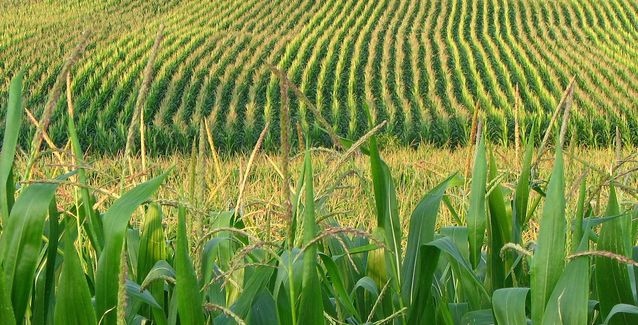Arkansas net farm income drops by $1 billion in 2023
by October 9, 2023 10:05 am 892 views

Net farm income has dropped dramatically in Arkansas in 2023. The Rural and Farm Finance Policy Analysis Center projects that net farm income in Arkansas is down about $1 billion this year when compared to a record setting $4.3 billion in 2022.
The center, working with agricultural economists from the University of Arkansas System Division of Agriculture, said in its “Fall 2023 Arkansas Farm Income Outlook” that Arkansas’ farm income totaled $3.3 billion.
The report said that total farm receipts declined $1.4 billion — with farm-related receipts offsetting a $1.5 billion decline in crop and livestock receipts — while production expenses decreased by $3 million and direct government payments fell by $60 million.
“Arkansas 2023 net farm income is projected to decrease from the record set in 2022,” said Hunter Biram, extension economist with the Division of Agriculture.
The decline in corn receipts is attributed to lower crop prices received despite seeing a 20% increase in planted acreage relative to 2022. Corn prices fell 28% to $4.75 from $6.65 per bushel. Biram said the decline is largely attributed to higher national planted acreage and weaker cash prices received at grain elevators near the Mississippi River driven by record-low river levels.
“Soybean receipts fell 25% on lower planted acreage and lower crop prices,” he said. “Cotton receipts fell 8% on lower planted acres despite relatively higher crop prices received compared to the 2022 harvest season, while rice receipts increased 11% on 330,000 more planted acres compared to 2022.”
Biram said government payments are expected to decline year-over-year from $460 million to $400 million due to Emergency Relief Program Phase 2 payments being $150 million less than ERP Phase 1 payments received in 2022.
“This is also despite Arkansas rice farmers receiving payments from the Rice Production Program, or RPP, which was authorized in the 2022 omnibus package,” Biram said.
Additionally, production expenses remained flat over 2022 despite key operating expenses such as seed, fertilizer, pesticides and fuel falling $177 million. Interest, labor, and rent to landlords increased by $143 million.
“This combination results in a 21 percent decrease in net farm income,” said Biram.
However, the good news is that “despite a decrease from 2022 to 2023, Arkansas net farm income is still above 2015-22 averages,” he said.
The report indicates that despite a decrease in 2023, Arkansas net farm income remains higher than levels seen in 2021. Arkansas is expected to see a 21% decline in net farm income, compared to a projected 23% decline in U.S. net farm income.
Other key findings from the report include:
Planted area of the state’s top seven crops, plus hay harvested, grew to 7.2 million acres in 2023. Soybeans, the state’s top field crop by area, had a decrease in 2023 planted acres. Crop receipts for 2023 declined a combined $600 million.
Poultry and egg receipts declined a combined $1.1 billion in 2023, largely due to lower prices. Cattle receipts have grown by $233 million, while hog receipts declined $9 million.
Egg receipts declined on lower prices which reflects the industry recovering following the avian influenza outbreak that affected 44.43 million birds in commercial egg operations, which reflects approximately 14.5% of Jan. 1 layer inventories.
Poultry production is 2.4% higher through August and the national composite broiler price is tracking 13.6% below 2022. Both have led to lower cash receipts in Arkansas.
Cattle receipts are higher on cyclically high prices following three consecutive years of contraction in the industry.
Fertilizer, feed and fuel expenses decreased by 0.03% in 2023, with a projected additional 6% decrease in 2024.
